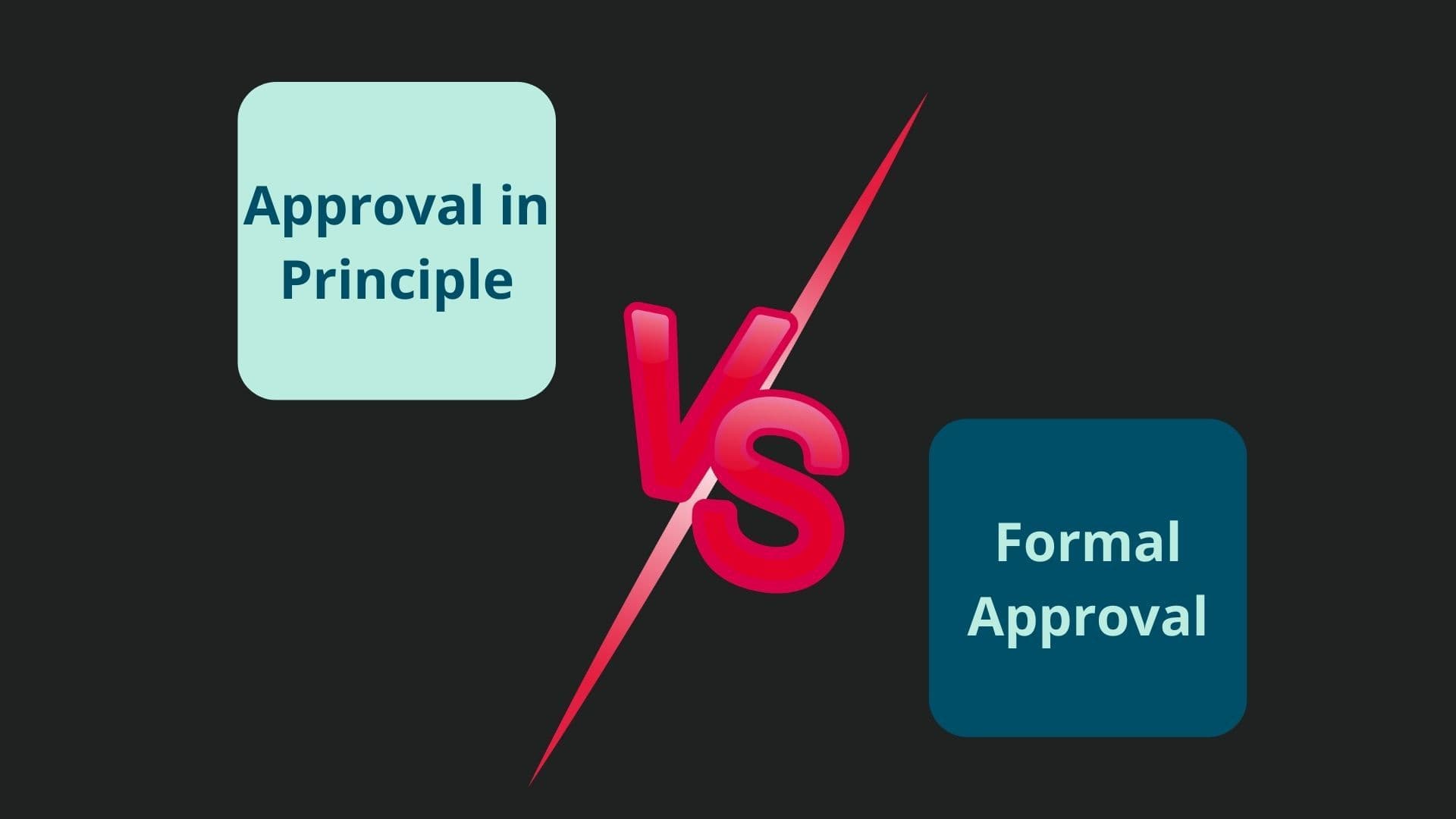Home Of Fair Facts & Tips
What is Approval In Principle? Find out Today!
Learn what Approval In Principle means in Australian home loans and discover if it really means you're approved to buy a home.

Embarking on the journey to homeownership in Australia is an exciting yet complex process that requires thorough understanding and careful planning. One of the first and most crucial steps in securing a home loan is obtaining an "Approval In Principle" (AIP). This initial stage sets the groundwork for the subsequent phases of your loan application and gives you a clearer picture of your financial standing and borrowing capacity.
Approval In Principle, also known as pre-approval, is essentially a lender's informal assessment of your ability to borrow a specific amount under certain conditions. It's not a guarantee, but it is a significant indicator of whether you're on the right track. Understanding this process and its importance can significantly enhance your chances of securing the home you desire, ensuring you are not only eligible but also prepared for the financial commitment ahead.
In this article, we will guide you through each step from Approval In Principle to obtaining Formal Approval, demystifying each stage to provide you with the knowledge needed to navigate this path confidently. We'll explore how AIP differs from other forms of approvals, what you need to secure it, and how it impacts your journey toward becoming a homeowner in Australia.
Approval In Principle
What is Approval In Principle?
Approval In Principle (AIP), often confused with pre-qualification, is a lender's initial evaluation of your financial health to determine how much they might lend you for a home loan. Unlike pre-qualification, which is often a rough estimate based solely on self-reported information, AIP involves a more thorough check of your financial documents by the lender. It's crucial to understand that while AIP is an important first step, it does not constitute a final approval or a guarantee that you will receive a loan.
Limitations of Approval In Principle
It's important to note that AIP is not an invitation to start buying or bidding on properties immediately. Rather, it serves as an indication of your potential borrowing power. This pre-approval can be particularly useful when house hunting, as it gives you a clear idea of your budget and shows real estate agents and sellers that you are a serious buyer with likely backing from a lender. However, the actual home loan approval depends on fulfilling additional criteria set forth during the conditional and formal approval stages.
How to Apply for Approval In Principle
Securing Approval In Principle requires careful preparation:
- Document Preparation: Gather all necessary financial documents, including proof of income (pay slips, tax returns), proof of savings, and current debt records (credit cards, other loans).
- Lender Criteria: Understand the specific criteria of your chosen lender. This might include a minimum credit score and stable employment history.
- Application Process: Apply for AIP by submitting your documents and filling out an application form either in person or through the lender’s online platform. By obtaining Approval In Principle, you position yourself as a credible buyer in the competitive real estate market, though it's crucial to proceed with an understanding of its preliminary nature.
Transitioning to Conditional Approval
Understanding Conditional Approval
Once you have your Approval In Principle, the next step towards securing your home loan is obtaining Conditional Approval, also known as pre-approval. This stage involves a more detailed evaluation by the lender, where they may request additional documents or clarify existing information. Conditional Approval means the lender has agreed, in principle, to lend you the money, but there are still a few conditions you need to meet before the loan becomes unconditional.
Steps to Move from Approval In Principle to Conditional Approval
- Meeting Conditions: Typically, these conditions might include verification of your financial documents, a satisfactory property valuation, and ensuring that there have been no significant changes in your financial situation since the AIP.
- Maintaining Financial Stability: It’s crucial to maintain your financial status quo during this phase—avoid taking on new debts, changing jobs, or making any large purchases that could affect your credit score.
- Communication with Lender: Stay in close contact with your lender during this phase. Promptly provide any additional documentation they request and address any queries they may have. Navigating this phase effectively is essential for moving smoothly to the next approval stage. It requires careful attention to detail and adherence to lender requirements.
Achieving Unconditional Approval
What is Unconditional Approval?
Unconditional Approval, sometimes referred to as formal approval, is when the lender has completed all their checks and has agreed to lend you the money without any further conditions. This is the point where your lender has fully committed to supporting your home purchase, having thoroughly verified all aspects of your financial background and the property details.
Differences Between Conditional and Unconditional Approval
While Conditional Approval is contingent upon satisfying certain conditions—like a satisfactory property valuation or further verification of financial documents—Unconditional Approval means all lender criteria have been met and the loan is ready to proceed to the final steps. It is essential not to confuse this with Conditional Approval as the risks associated with any changes in your financial situation are significantly reduced once you have reached this stage.
- Document Finalization: At this stage, ensure all your documentation is complete and up-to-date. The lender might re-check your financial stability to ensure nothing has changed since the initial application.
- Legal Checks: Your legal team will perform any remaining checks on the property’s title and other legal aspects to ensure there are no last-minute surprises.
- Final Loan Documentation: You will receive the final loan documents to sign, which formalizes the mortgage agreement.
Importance of Unconditional Approval
Achieving Unconditional Approval is a key milestone in the home buying process because it officially secures the financing you need to proceed with purchasing your property. It provides peace of mind that the financial aspects of your home purchase are confirmed, allowing you to focus on the logistics of moving and settling into your new home.
From Unconditional to Formal Approval
Understanding Formal Approval
Formal Approval, also known as final approval, is the conclusive step in the home loan process. This stage confirms that all the lender's requirements have been met, the property has been adequately appraised, and all legalities are in order. It marks the transition from merely having the financial backing to being fully authorized to finalize the property purchase.
Steps to Achieve Formal Approval
- Final Verification: The lender conducts one last review of your financial situation and the property details to ensure that no new issues have arisen since granting Unconditional Approval.
- Signing of Loan Documents: You will receive the official loan documents that need to be signed and returned. These documents formalize the terms and conditions of your mortgage.
- Legal and Title Checks: Your legal representatives will finalize any outstanding checks regarding the property’s title and other legal aspects to ensure everything is in order for the transfer of ownership.
- Settlement Preparation: Prepare for settlement day, when the loan funds are transferred from the lender to the seller, and you officially become the property owner.
The Role of Formal Approval in the Home Buying Process
Formal Approval is your green light to proceed with the purchase. It provides assurance that everything is aligned both financially and legally for the property transfer. This approval is crucial as it means the lender has fully committed the funds for your mortgage, allowing you to confidently make plans for moving into your new home.
Conclusion
In conclusion, the journey from obtaining an Approval In Principle to receiving Formal Approval for a home loan in Australia involves multiple critical steps, each serving an important function in securing your future home. Starting with Approval In Principle, which provides a preliminary estimate of your borrowing capacity, through to Conditional and Unconditional Approval stages that further solidify your financial stability and readiness to purchase, and finally culminating in Formal Approval which allows the actual transaction to take place.
This structured process ensures that both the lender and the buyer are on secure footing before the final transaction is made. Understanding each stage not only prepares you for the requirements and expectations of the process but also positions you to navigate it with greater confidence and efficiency.
By carefully managing each phase, from gathering the necessary documents for Approval In Principle to meeting the conditions for subsequent approvals, you empower yourself to make informed decisions and move closer to your goal of homeownership.
Disclaimer: Unless otherwise specified, the opinions expressed in this article are strictly for general informational and entertainment purposes only and should not be taken as financial advice or recommendation. Views are subject to change without notice at any time.
Written By

The Craggle Team

